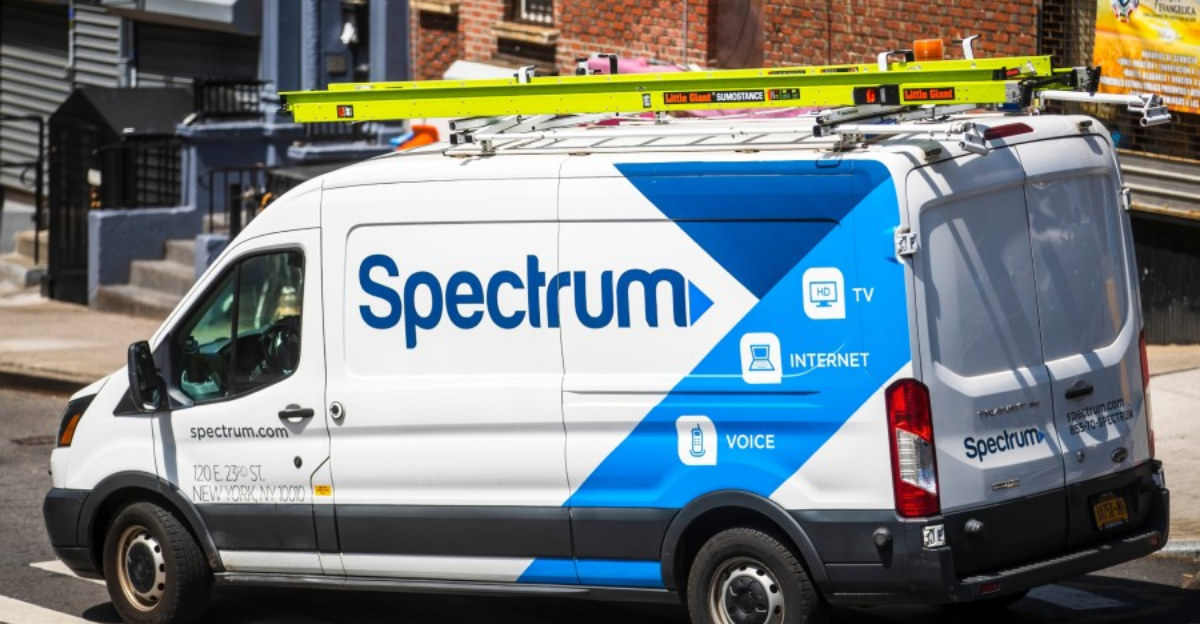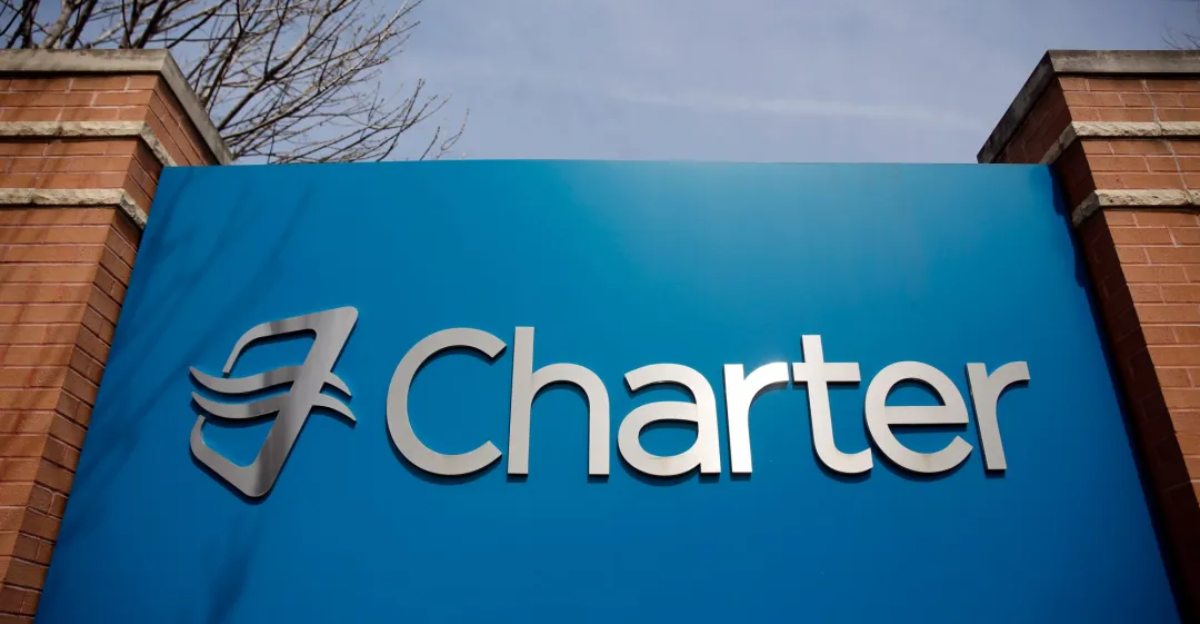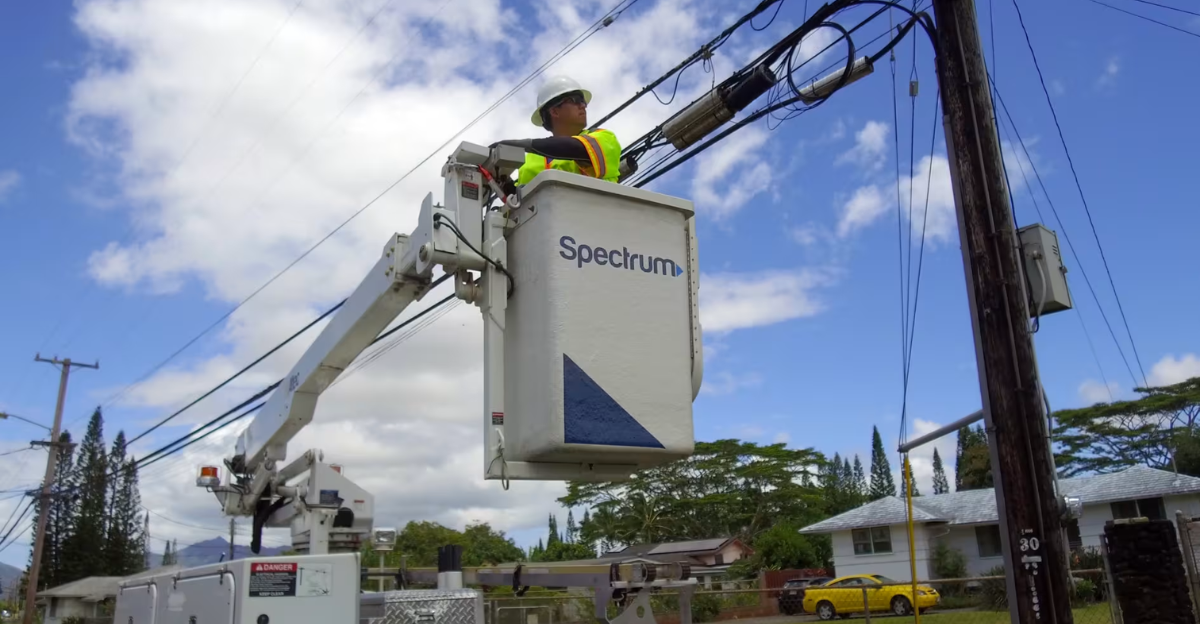
A major U.S. internet giant is tightening its belt. On Tuesday, the company announced 1,200 corporate layoffs—over 1% of its 95,000-person workforce—targeting back-office staff while sparing customer-facing roles.
“The moves are aimed at streamlining operations,” a source told Reuters. The cuts follow a quarterly loss of 117,000 broadband subscribers, even as mobile service revenue jumped 24.9% to $13.8 billion.
Can shifting growth from cable to mobile save this broadband heavyweight from its mounting decline?
Who Cut 1,200 Corporate Roles?

On 21 October 2025, Charter Communications confirmed plans to cut about 1,200 corporate and back-office jobs, just over 1% of its 95,000-person workforce. The company remains the second-largest U.S. internet provider, serving nearly 32 million customers across 41 states.
CEO Chris Winfrey, who took the helm in December 2022, leads the restructuring alongside CFO Jessica Fischer. As executives tighten operations, the focus shifts to how these cuts reshape Charter’s corporate structure and strategy.
Who’s Steering the Restructure

Charter’s top ranks include Executive Chairman Tom Rutledge, EVP Catherine Bohigian (Government Affairs), EVP Bill Archer (Commercial), and EVP Rich DiGeronimo (Product and Technology). The cuts mainly target administrative, management, and support positions at Stamford headquarters and regional offices.
By sparing sales and service teams, leadership aims to protect customer interactions. Yet, behind closed doors, many are wondering if internal reductions could eventually ripple into customer-facing operations.
Why Back-Office Jobs Were Targeted

Executives describe the move as “streamlining operations,” focusing on non-customer-facing roles to improve agility and reduce corporate overhead. Sales, service, and field technicians remain unaffected.
The decision suggests confidence that daily service quality won’t falter—but also acknowledges deep financial pressures. As margins tighten, many ask whether cost-cutting alone can sustain competitiveness in a shrinking cable market.
The Financial Picture Behind the Cuts

In Q2 2025, Charter posted $13.8 billion in revenue, up 0.6% year-over-year, and $1.3 billion in net income, up 5.7%. Adjusted EBITDA reached $5.7 billion, while free cash flow fell 19.3% to $1 billion.
Subscriber losses and heavy capital spending strained liquidity despite profit growth. With $2.9 billion in quarterly capital expenditures, Charter’s efficiency drive may be less about cutting fat—and more about survival.
Broadband Losses Deepen

Charter ended Q2 2025 with 29.9 million broadband subscribers, a drop of 117,000 year-over-year. The loss marks one of the steepest quarterly declines in recent years.
The end of the Affordable Connectivity Program hit hardest, removing subsidies for millions of low-income customers. Executives say retention remains “strong,” but many wonder how long households can afford full-price plans.
Market Reaction Turns Sharp

Following its July 25 earnings report, Charter’s stock fell 18.5%, signaling investor unease about broadband churn and flat revenue growth. Analysts cited weak subscriber metrics and rising costs as key drivers of the decline.
The market drop underscores fading confidence in cable’s resilience. Yet, Charter’s upcoming acquisition plans may change that narrative—if they can deliver promised synergies.
Where the Axe Fell

Most layoffs center at Charter’s Stamford, Connecticut headquarters—home to over 2,000 corporate employees. Regional back-office and satellite offices across the U.S. are also affected.
Earlier call center consolidations in California, Minnesota, Ohio, and Texas had already reduced headcount. The question now is whether this consolidation pattern foreshadows further downsizing in 2026.
Timing and Transition

Layoffs were reported this week on Tuesday, October 21, 2025, with effective dates varying by region under WARN Act guidelines. Affected employees receive severance, relocation options, and internal job placement assistance.
Q2 financials, released three months earlier, provided the backdrop for the move. Together, these events reveal a company repositioning in real time—while its competitors brace for similar news.
Why Charter Is Cutting Costs

Executives cite “operational streamlining” and rising competition from fiber and 5G providers as the main reasons. Companies like AT&T, Verizon, and T-Mobile now lure customers with faster, cheaper wireless internet.
At the same time, streaming services keep accelerating cable’s decline. As traditional video revenue falls nearly 10% year-over-year, Charter’s leadership faces a pivotal question: can broadband and mobile bundling offset the bleeding?
Strategic Pivots Underway

Charter is investing $12 billion this year in fiber upgrades and rural expansion, plus another $7 billion in public-private broadband projects. Its $21.9 billion bid for Cox Communications would make it the nation’s largest cable and broadband provider.
The company is also partnering with Comcast on a T-Mobile-powered mobile network launching next year. But whether these big bets can revive growth remains uncertain.
Human Cost of Restructuring

Roughly 1,200 employees face layoffs, most in management and administrative roles. Severance packages include financial compensation, benefits, and career support consistent with federal standards.
For Stamford’s local economy, the impact is personal—about 2,000 headquarters workers and their families will feel ripple effects. The community’s dependence on Charter makes these cuts more than a corporate headline.
Ripple Effects on Small Business

Charter’s local partnerships support hundreds of suppliers and small businesses through grants and connectivity programs. Since 2020, the company has invested over $185 million in 427,000 small businesses across its service areas.
As operations tighten, local vendors and partners brace for possible contract changes. Could this restructuring ripple through Charter’s broader economic footprint?
Supply Chain and Vendor Impact

Charter contributes roughly $48 billion annually to U.S. GDP and supports 480,000 jobs through its supply chain. Its reorganization may disrupt contracts, affecting vendors that depend on its vast infrastructure spending.
With cost controls now front and center, suppliers face an uncertain 2026. How far will efficiency efforts reach before they start eroding vital business partnerships?
Consumers Feel the Shift

Nearly 30 million broadband users and 10.9 million mobile customers rely on Charter. The loss of ACP subsidies hit low-income households hard, forcing many to seek alternative providers.
Average revenue per user sits at $122.86, prompting fresh bundling deals to slow churn. But as households reassess monthly bills, will price promotions be enough to keep them loyal?
Investors Grow Restless

Following Q2 results, Charter’s market value plunged. Some shareholders have filed class-action lawsuits, alleging the company misrepresented how ACP’s expiration would affect subscriber numbers.
The legal and market pressure add another layer of uncertainty. As earnings season approaches, all eyes turn to whether leadership can restore investor confidence before further selloffs hit.
Cable’s Broader Reckoning

Comcast, Paramount, and Cox are also slashing staff, signaling an industry-wide reset as streaming dominance accelerates. Traditional TV’s business model is eroding faster than many expected.
With telecom and satellite competitors expanding aggressively, the once-stable cable empire looks fragile. Is this contraction a temporary correction—or the start of an irreversible decline?
Leadership Speaks on the Future
CEO Chris Winfrey remains optimistic: “Our converged connectivity revenue grew by over 5% in the second quarter, with a long runway for growth.” He insists Charter’s long-term outlook remains strong.

CFO Jessica Fischer adds, “Fixed wireless is most impactful where we don’t have fiber yet… Charter’s bundles are a better value.” Their confidence suggests one thing—Charter isn’t giving up the fight just yet.
What You Can Do Now

Charter’s layoffs target back-office staff, not technicians, but history shows customer service often suffers when corporate support is thinned. Keep an eye on billing errors, slower responses, or outages.
If prices rise again, call Spectrum’s retention department and negotiate—many customers secure $20–30 monthly savings. Compare offers from AT&T, Verizon, or T-Mobile 5G before your contract renews, and don’t stay loyal if switching gets you a better deal.
The Bottom Line

Charter’s cuts signal deeper trouble in the cable industry, where fewer people are paying for traditional TV and internet.
As the company trims costs, consumers should stay alert—watch for service dips, rising rates, and better deals elsewhere. The power’s in your hands to negotiate, switch, and make sure you’re getting real value for your money.